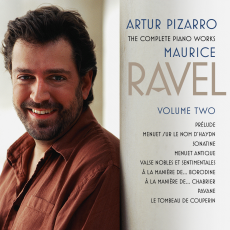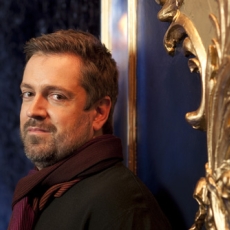Maurice Ravel Volume Two - Artur Pizarro - Atlanta Audio Society
In volume 2 of the Complete Piano Works of Maurice Ravel, pianist Artur Pizarro shows the qualities that have made his Ravel so treasurable: a beautifully focused tone and feeling for small nuances in meter and texture that can make a profound difference when interpreting this composer. With a sure understanding of the central harmonies toward which Ravel is always working, Pizarro can be precise without seeming artificial or fussy. And the truly lovely sound of his instrument, a Bluthner Model 1 concert grand, suits his artistic purpose to perfection.
As opposed to Volume 1, which contained some emotionally moving and even grim moments (Barque sur l'Océan and Alborada del Gracioso from Miroirs, and the three certified nightmares that comprise Gaspard de la Nuit), Volume 2 mostly reveals the neo-classical side of Ravel. It includes such relatively neglected but thoroughly charming pieces as Prélude, Sonatine, Menuet sur le nom d'Haydn, and Menuet Antique, all of which require both exactitude and subtle flexibility in terms of rhythm. The two pieces in the manner of Borodin and Chabrier both pay homage in Ravel's finely chiseled way to the actual styles of those composers, the former with rhythmical footfalls that recall the Polovetsian maidens from Price Igor, the latter in the wonderful feeling of open air and sun that recall the Picturesque Scenes of that forefather of Impressionism.
The great works on the program were worth waiting for: Valses Nobles et Sentimentales, Pavane pour une Infante Défunte, and Le Tombeau de Couperin. The eight pieces in Valses are subtly characterized by Pizarro in terms of contour and mood, with an ear for the firm harmonies underpinning them. In the last of the Waltzes, the pianist shows us some of the most finely graduated pianissimo dynamics I have ever heard on record. (And it's not just for show, either, as it reinforces the prevailing sadness of the work as a whole.) Pavane for a Dead Princess, despite Ravel's disclaimer that the title was meaningless, continues to have a haunting effect on listeners in its slow harmonic progression and its sad overall mood, and Pizarro captures both to perfection.
Le Tombeau de Couperin (In Memory of Couperin) is the apex of Ravel's neo-classicism. As played by Pizarro, the tone is cool without seeming detached, light without seeming superficial - not easy distinctions to make. This original piano suite, as opposed to the orchestral version we have been used to hearing, contains two additional movements: a Fugue that is remarkably light in texture for a form that generally tramps about in seven league boots, and a very lively and imaginative Toccata. For the sake of balance, Ravel also reversed the order of the Forlane, an energetic country dance of olden times, and the quick, graceful, finely etched Minuet.
The award-class sound recording, produced and engineered by Philip Hobbs at one of the UK's best sonic venues, St. George's Church, Bristol, is ideal for both Ravel's music and Pizarro's finely honed interpretations. (Are you listening Gramophone Awards?)

